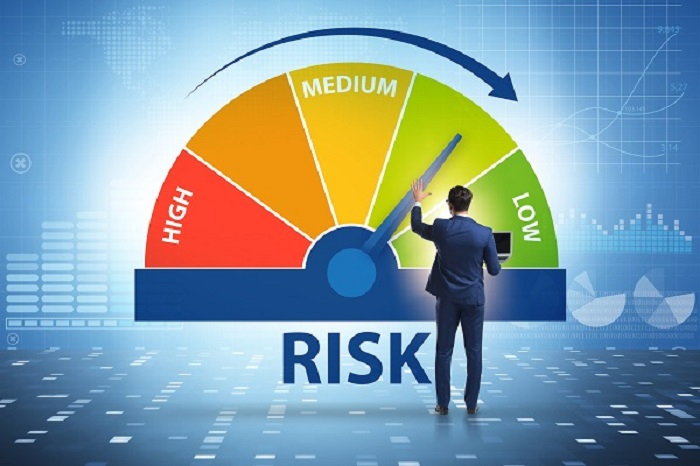
 Data Structure
Data Structure Networking
Networking RDBMS
RDBMS Operating System
Operating System Java
Java MS Excel
MS Excel iOS
iOS HTML
HTML CSS
CSS Android
Android Python
Python C Programming
C Programming C++
C++ C#
C# MongoDB
MongoDB MySQL
MySQL Javascript
Javascript PHP
PHP
- Selected Reading
- UPSC IAS Exams Notes
- Developer's Best Practices
- Questions and Answers
- Effective Resume Writing
- HR Interview Questions
- Computer Glossary
- Who is Who
Risk Mitigation - Definition, Types, Strategies, and Tools
Businesses face challenges and threats throughout their lifecycle. At every stage of a business cycle, there is some or other sort of risk involved. While all the risks cannot be accurately predicted, it is better to keep them in mind while devising operational, financial, and management strategies. Potential risks must be studied before venturing out into a new task or challenge. And suitable preventative measures must be followed in order to rule out the possibility of businesses failing due to unaccounted risks. In this article, we will see what risk mitigation is, its types, various strategies, and the tools involved.

What Is Risk Mitigation?
Risk mitigation involves a systematic process in which an organization identifies, analyses, and proposes measures to effectively handle various risks that might pose threat to an organization's functions or operations. Every organization must carefully curate its risk mitigation plan.
PMBOK offers the following focus areas or procedures for an effective risk management plan ?
Plan a risk management process
Identify potential risks
Conduct a qualitative risk analysis
Conduct a quantitative risk analysis
Plan responses for risks
Implement risk responses
Monitor the potential risks
Now let us look in detail at the types of risks in a project and the strategies to mitigate those risks.
What Are the Types of Risk in a Project?
Every project will have its own set of risks. Sometimes it is not even possible to identify and plan for all the risks. But an effective risk mitigation plan will aim at reducing the possibility of failure by carrying out a 360-degree approach to identify and mitigate at least the most common risks.
The following are the most common types of risks in a project: cost overrun, schedule overrun, performance risk, financial risk, operational risk, legal risk, systematic risk, governance risk, risk of market fit, legal risk, external risks, etc.
What Are the Various Risk Mitigation Strategies?
Depending on the organization and the type of project, the risk mitigation strategies might differ. Sometimes one strategy might be preferably used when compared to others. While in some cases, a combination of strategies can be used depending on the magnitude of the problem at hand. Here are the different types of approaches that can be followed to mitigate risks in a project ?
Acceptance of Risks
This approach focuses on accepting certain risks in an organization for a certain period of time. Such an approach will help in prioritizing resources and efforts over solving risks that are deemed to have severe consequences.
This is carried out by identifying the risks and the vulnerabilities associated with those risks. Hence all the members working on a project will know that these risks exist. By bringing such acceptable risks to the business's attention, organizations can effectively handle any setbacks.
Avoidance of Risks
This approach is particularly used when the consequences of risk are very severe. The acceptance of risks is totally not advisable because the consequences are larger than the cost of mitigation. This strategy is quite common and must be implemented earlier in any process.
Transfer of Risks
The transfer of risk approach transfers the responsibility of managing risks to various parties depending on their capacity to mitigate the risk.
Controlling Risks
This risk control strategy is usually used to mitigate risks that were identified and accepted. The main objective of such an approach is to contain the impacts caused by acceptable risks to a minimum.
Monitoring of Risks
This strategy needs to be in place so that the risks are monitored continuously to identify changes that might impact the mitigation process. Risks associated with cost, performance, and scheduling can all be monitored continuously and sometimes this forms a part of an organization's standard review plan.
How to Create an Effective Risk Mitigation Plan?
Creating a risk mitigation plan is very important for an organization. The following steps need to be followed according to PMBOK for devising an effective risk management or mitigation plan ?
Risk Management Planning ? In this step, the key metrics of a project are understood in order to set the risk tolerance limits for an organization. Also, a common evaluation criterion has to be established and agreed upon by the key members of an organization. Next, the weights and impact of all these key parameters must be discussed in order to plan relevant risk mitigation strategies. Some techniques used include risk index priority number and risk assessment criteria matrix.
Risk Identification ? This is probably the most important step in the risk mitigation process. This must happen through various iterations and must be an ongoing process in an organization. Most importantly risk identification must be carried out before a new activity or phase is scheduled.
Risk Assessment ? The identified risks must be evaluated against the risk assessment criteria matrix established in the first step. Techniques like ?inflation' and ?combining' must be carried out to assess the nature and characteristics of all the identified risks.
Risk Event Response Planning ? This step involves the identification of a risk response/mitigation strategy and the creation of an implementation plan for the risk mitigation strategy. As discussed earlier, certain events might demand a combination of strategies and the implementation plan must be efficient enough to address it.
Risk Event Monitoring and Control ? This is again a continuous ongoing process. Monitoring and control ensure that relevant measures are taken as and when any event is triggered. This step involves a lot of tracking and recording.
Tools Used for Risk Mitigation
The risk mitigation process needs to be systematic in order to ensure proper action is taken at various stages of a project. In order to do this the following tools or techniques are being used by organizations across the world ?
Risk Assessment Framework (RAF)/Risk Assessment Criteria Matrix
Risk Index Priority Number
Probability and Impact Matrix
Strength, Weakness, Opportunity, and Threats (SWOT) Analysis
Root cause analysis
Conclusion
An organization's success can be easily determined by having a look at its risk mitigation strategies and approaches. Because there is no business that is completely immune to risks. However, there are businesses that handle risks effectively and sometimes better than their competitors. Hence risk mitigation is a very crucial element to an organization's success.

